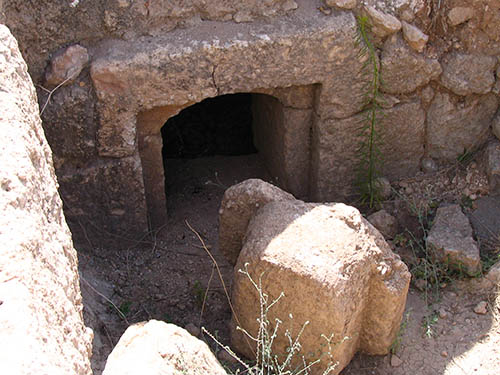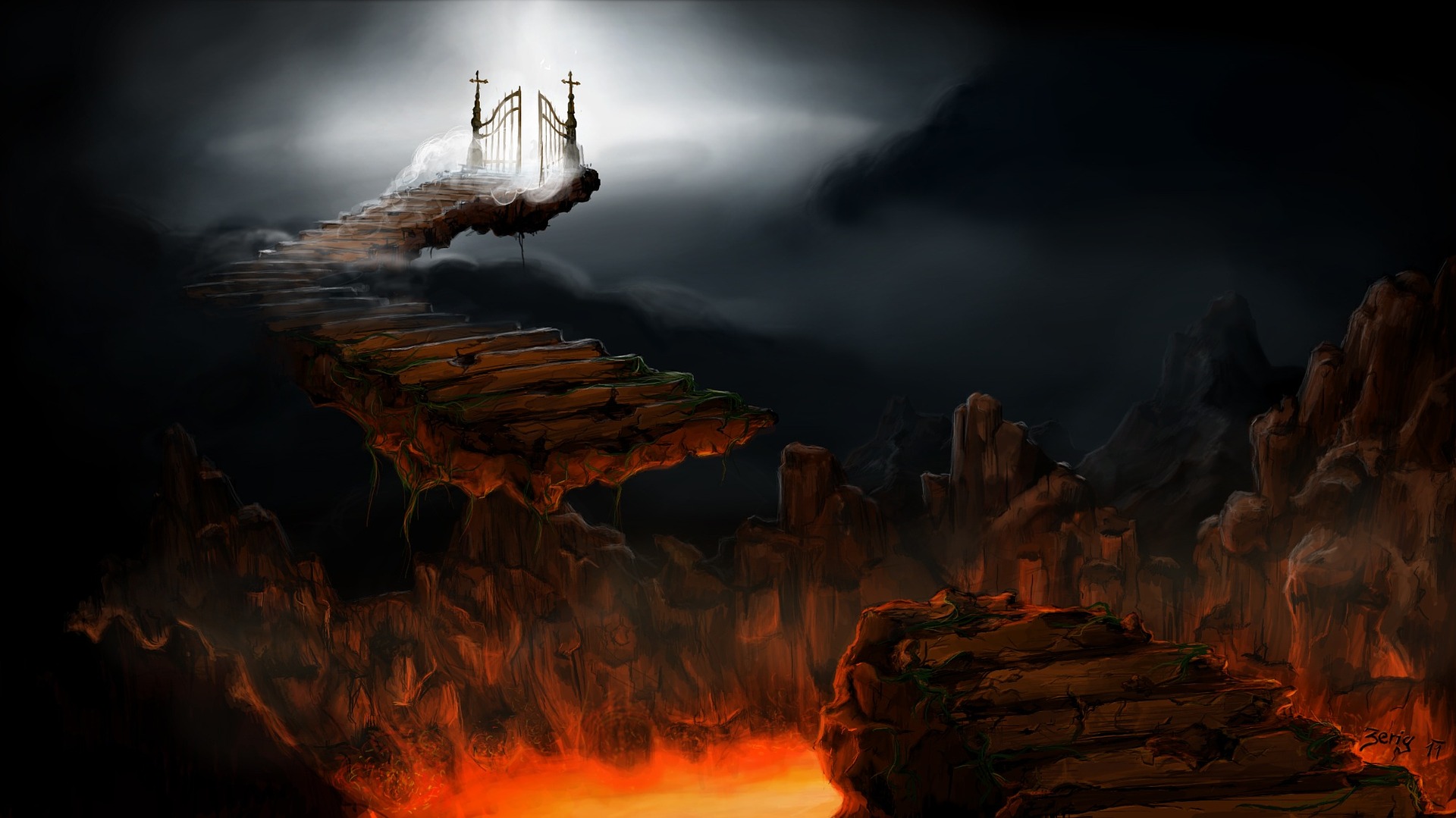Critiquing The Swoon Theory: Jesus Didn’t Really Die On The Cross
As Christians, we believe that the evidence that Jesus of Nazareth died on the cross, his tomb was found empty, and he rose from the dead to be seen by his followers shortly thereafter. The belief in the Resurrection is the cornerstone of our entire world view. But, are there credible alternate theories as to what happened 2000 years ago? Can we attribute the rise of Christianity to an alternate explanation of the facts? Maybe there’s another explanation for why the tomb was found empty and why he was able to spend time with his followers after his execution.
Maybe he didn’t really die on the cross.
Possible vs. Reasonable
We’ve talked about this on the site before, but just as a recap; there is a difference between what is possible and what is reasonable. Anything is possible, but not everything is reasonable. We don’t live our day-to-day lives based on what is possible. It’s possible that when I open my garage tomorrow, a shiny red Camero will be there. It’s possible that some thief in the night has stolen one from a local dealership, gotten past the locked gate of our complex, gotten past my garage door, and stowed it in my garage to come back for it later. But, it’s more reasonable to believe that when I next open my garage door, my family van will be there instead.
As we review these theories, we have to look at the given facts and see which explanation is most reasonable, not which ones are merely possible.
What Is The Swoon Theory?
The swoon theory proposes that Jesus didn’t really die on the cross. Somehow, he survived the execution, was taken down from the cross while unconscious, and was still alive when he was placed in the tomb. The coolness of the tomb and the spices his body was prepared with revived him. He left the tomb and found his disciples, thus appearing to them after his supposed death.
But, does this theory answer all the questions? Or does it raise more than it answers? Well, if Jesus were still alive, it would explain why the tomb was found empty. Because he got up and walked out. And it would explain his bodily appearance to his disciples afterwards, too.
But, there is one other accepted fact that this theory proposes to be wrong in order for it to be true. What about the dying on the cross part? Could Jesus really have survived such a punishment?
Problem 1: The Romans Knew How To Kill People
As discussed in the article on the evidence for the resurrection,the Roman soldiers were trained killers. They knew how to kill people, and they knew what a dead body looked like. Let’s look at the account from John 19:31-34 regarding the soldiers checking the bodies on the crosses to see if they were still alive.
31 Since it was the day of Preparation, and so that the bodies would not remain on the cross on the Sabbath (for that Sabbath was a high day), the Jews asked Pilate that their legs might be broken and that they might be taken away. 32 So the soldiers came and broke the legs of the first, and of the other who had been crucified with him. 33 But when they came to Jesus and saw that he was already dead, they did not break his legs. 34 But one of the soldiers pierced his side with a spear, and at once there came out blood and water.
The Jews wanted to hurry this execution along because the next day was the Sabbath and they wanted to have everything wrapped up before then. Remember, when you were crucified, you died of suffocation. Your body became too exhausted to keep pushing up on your nailed feet when you wanted to take a breath. Eventually, you would no longer be able to push your self up, you would suffocate and then die. If you were taking too long to die, the Romans would break your legs so you could no longer push up at all. But, when the soldiers came to Jesus, they didn’t break his legs. Why? Because they examined him and determined that he was already dead.
Appearance of death wasn’t enough to declare Jesus dead, though. If the Roman soldiers made a mistake, and pulled a live body off of the cross, it was they who would be next in line for execution. So, they stuck a spear in his side to be sure. When they did this “at once there came out blood and water”. Now, John likely had no idea what this meant when he recorded it. And, many in the church have tried to take the water as some sort of metaphor or to have a higher meaning other than it just being plain water. But, thanks to John’s observation, we have a key clue as to Jesus being dead.
This “water” is actually fluid that builds up around the heart and/or lungs when the body goes into shock. This condition is called pleural effusion when the fluid buildup is around the lungs and pericardial effusion when the fluid is surrounding the heart. Jesus had been beaten nearly to death before he was hung on the cross, he had suffered much blood loss, and he had hung there laboring to breathe. The water that John records is a sign of the amount of shock Jesus’ body had gone through, and a sign of his death.
Problem 2: The Jews Knew What Dead People Looked Like
After Jesus was declared dead, Joseph of Arimathea, a member of the Jewish high council, and Nicodemus, a Pharisee, took Jesus’ body down from the cross and made it ready for burial. They wrapped it in linen cloth and prepared the body with spices. Once this was done, they placed it in a tomb owned by Joseph that had never been used before. This process would have taken a few hours to complete.
As soon as someone dies, their body begins a process that former cold case detective J. Warner Wallace calls the Mortis Triad. As soon as the heart stops pumping blood throughout the body, it immediately starts to experience temperature loss. This process is known as “algor mortis”. When you touch a dead body, it no longer has that warmth you are familiar with when you shake someone;s hand. They are cold to the touch.
Also at this time, the body begins to stiffen and lose its flexibility, until it is finally becomes locked into position a few hours later (“rigor mortis”). And, since the heart is no longer pumping blood around the body, the blood goes where gravity pulls it. So, if a body is found lying on it’s back, there will be discoloration on the back from the pooling of blood. All of these things are signs that are easily recognizable indicators to someone that a body has no life in it. You don’t need instruments, tests, or a medical degree to see them.
In modern society, we usually have an ambulance pick up the deceased, a coroner determine cause of death, a mortician prepare the body for burial and a funeral home to place the body in the casket and prepare it for viewing. Details vary based on culture, but it usually isn’t the family who does any of that anymore.
In first century Jewish society, it was family and friends who prepared a body for burial. They handled all aspects. So, they knew the signs of death. They knew what a dead body felt like and how it looked. Dead bodies look and feel differently than live ones do.
Based on these details, it’s safe to say that Joseph and Nicodemus would have known if Jesus was still alive or not when they were preparing the body for burial.
Problem 3: Getting Out of The Tomb
Let’s entertain the notion that Jesus was still alive when he was placed in the tomb. And somehow, he was able to regain consciousness. Let’s remember the condition he would have been in; severely beaten. holes all the way through his wrists and feet, and a large wound in his side where the spear had pierced him likely damaging some major organs on the way through.
In this condition, his first obstacle would have been the stone covering the tomb’s entrance. The stone would have weighed over a ton. Tomb entrances were typically 2-3 feet wide, and the stones that covered them were a 1′ thick. For a single healthy man to move this stone would have been almost impossible. For a man who had just been beaten nearly to death and survived an execution… not gonna happen.
Problem 4: The Guards
OK, so let’s say that in his extremely weakened state, Jesus was able to get the stone away from the entrance to his tomb. He still would have had to deal with the group of guards on the other side of the door. The Jewish high council had heard Jesus predicting his return from the dead. So, they went to Pilate and asked for guards to be place at his tomb to keep any shenanigans from happening. A single, well-trained soldier could not fight off as many Roman guards as were likely there – let alone someone in Jesus’ condition. So, even if Jesus would have survived a severe beating, near asphyxiation, an open wound in his side that likely damaged his organs and then managed to move (by himself) a stone from the entrance blocking his tomb that would normally have taken 2-3 men to move, is it reasonable to think he would have gotten past 10-12 of Rome’s Finest? The answer is no.
Problem 5: He Was Seen By The Apostles
It may sound strange that Jesus being seen by the apostles would have been a problem. This is what solidified their belief that he was who he said he was after all. This problem points less to the fact that he was seen and more to the condition he would have been seen in. Think of all Jesus had just been through. He would have shown up looking like a mess. And the first thing that the apostles would have said wouldn’t have been “he has risen!”; it would have been “get him a doctor!”. He would have looked like he had survived all the things he had just been through. He wouldn’t have looked like he brushed them all off and returned triumphantly from the dead.
You may think to yourself with Jesus still alive, this would be the perfect opportunity for the apostles to be able to “claim” he had risen from the dead even if they realized he had not. They could have conspired with him to perpetuate this myth. But the more you look at how the apostles’ lives changed after seeing the risen Jesus, and how they had nothing to gain by perpetuating it, you will realize that the conspiracy theory for Jesus’ resurrection is a bad one.
More Problems Than Answers
Whenever a theory is proposed for something, we have to look at the evidence and see if it offers a reasonable explanation for what happened. Can the Swoon Theory explain the resurrection of Jesus of Nazareth? If Jesus didn’t really die, would it explain an empty tomb? Would it explain his appearance to his followers three days later?
Possibly. But, when you look at the problems – surviving a Roman crucifixion, appearing “dead enough” to be prepared for burial, opening the tomb by yourself, getting past the guards, and convincing people who saw you that you had risen from the dead and not simply survived the execution – this theory seems highly suspect. In fact, it has more problems than solutions.
Is this theory possible? Sure, in the same way it’s possible I’ll find that Camero in my garage tomorrow. But, after analyzing this theory a little closer, it certainly isn’t reasonable
Share This Story, Choose Your Platform!
latest video
news via inbox
Nulla turp dis cursus. Integer liberos euismod pretium faucibua








Great job! Logical, clear, & “reasonable.” Keep it coming, Dave!!
Thanks, Karin!
Just the time line don’t add up, tell how many hours on the cross? from sixth hour to 9th hour, then both an Eclipse and Dust Storm, Dark for three hours, the “light of the world” was just killed, innocent and a sacrificial lamb, on passover, Sabbath.
Dave, you did a very comprehensive exposition in relatively short article! Excellent work!